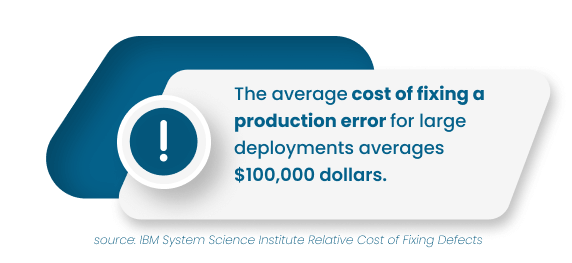Technology management in e-commerce: How to avoid the trap of technology debt?
Companies are striving to balance innovation with maintaining the stability of existing systems as technology evolves rapidly. The term "technology debt" has become particularly significant in this dynamic.
Technology debt, a term coined by Ward Cunningham, one of the creators of the Extreme Programming methodology, refers to the cost of the extra effort required to make later changes to an IT system due to earlier decisions to use easier but not necessarily best solutions.
It is a financial metaphor that helps understand the nature of the trade-offs between an ideal and practical solution in the short term.
The importance of technology debt in the e-commerce industry
In e-commerce, technology debt can take many forms - from outdated code to insufficient testing and negligence in documentation. While they may seem insignificant at first glance, this can lead to severe inconveniences, such as difficulties when introducing new features, performance issues, and security gaps.
Technology debt can become a significant obstacle where competition is fierce and customer expectations are rising. That is why e-commerce platforms must be functional, easy to use, fast, secure, and scalable. If Technological debt is not managed appropriately, it can lead to slower growth, increased operating costs, and lost customers. In this case, an appropriate risk management model is essential.
Together we will analyze your needs and advise you
on how to increase the efficiency of your e-commerce.
What situations lead to technology debt?
Many e-commerce projects accumulate technology debt due to the pressure of delivering new features and improvements. In the process, software development decisions sometimes prioritize speed over quality and the long-term sustainability of solutions.
Typical causes of technology debt include:
- Design compromises: To implement new features quickly, teams may opt for interim solutions or "quick fixes" that do not follow the most appropriate design practices. This can lead to scalability and maintenance issues in the future.
- Inadequate testing: Under time pressure, software testing may be limited or omitted. This increases the risk of bugs and defects that can be costly to fix later. Insufficient software testing can lead to overlooked bugs and problems that only become apparent later, requiring additional effort to repair them.
- Neglecting to update and upgrade: Technology ages quickly in a dynamic e-commerce environment. Companies that disregard regular updates and upgrades to their systems accumulate technology debt that becomes increasingly difficult and expensive to eliminate over time.

- Lack of documentation: Omitting or inaccurately documenting code and development processes can lead to a situation where only a few team members understand how the system works. This makes it difficult to make changes and increases the risk of errors.
- Inaccurate documentation, lack of communication, or turnover in the team can lead to a loss of knowledge about the project and a loss of consistency in the code.
- Over-reliance on specific technologies: Being tied to particular technologies or platforms without anticipating future needs can limit the ability to evolve and adapt to new trends. Likewise, a lack of understanding of customer requirements or misalignment of technology with the project can lead to suboptimal solutions that generate technology debt.
- Code refactoring: Lack of regular code refactoring can increase code complexity and loss of readability, making it difficult to change and maintain later.
- Poor solution selection: Choosing the wrong architectural solutions early in the project can complicate later system modification and expansion.
- Failure to adapt to changing business requirements: Failure to update systems in response to changing market and business requirements can lead to outdated solutions that do not meet current customer needs.
- Security: Lack of proper security practices, such as input validation, can lead to safety vulnerabilities that require remediation later.
Recognizing these common pitfalls is the first step to effectively managing technology debt and ensuring that e-commerce projects remain flexible, scalable, efficient, and competitive.
Identifying and assessing technology debt
Effective identification and assessment of technology debt are fundamental to maintaining a healthy and sustainable system. This process requires both a systematic approach and the use of appropriate tools.
Methods for identifying technology debt:
- Code review: Regular code reviews by development teams can help detect problem areas, such as complex, unreadable, or outdated code. These reviews should be part of the standard development process.
- Performance analysis: Monitoring system performance can reveal hidden problems, such as delays in server responses or difficulties processing large amounts of data, which indicates technology debt.
- Feedback from the team: Regular meetings with the development team to discuss difficulties encountered while working on the project can be a valuable source of information about potential technology issues.
- Security audits: Security audits can reveal weaknesses in a system that require immediate attention and can be a sign of technology debt.
- Technical Debt Tracking Tools: Dedicated technology debt tracking tools allow teams to monitor, manage, and prioritize the project's technical backlog.
These tools and approaches, combined with regular monitoring and analysis of the project's technical status, will effectively identify, assess, and minimize the occurrence of debt risk.
Tools and techniques for assessing the impact of debt on a project:
- Static code analysis tools: Tools like SonarQube or Checkmarx can automatically analyze code for quality and security issues, providing valuable insights into potential technology debt.
- Bug tracking systems: Using systems like Jira or Bugzilla to track and analyze bugs and issues can help identify the areas that generate the most problems.
- Refactoring methodologies: Systematic refactoring of code, that is, cleaning and optimizing it without changing functionality, can help identify and reduce technology debt.
- Technical indicators: Establishing and monitoring key performance indicators (KPIs), such as system response time, number of production errors, or time to introduce new features, can help assess the impact of technology debt on a project.
These methods and tools assist e-commerce companies in effectively identifying technology debt and assessing its impact on the project, which is essential for making informed decisions about development priorities and technology investments.
Costs associated with platform upgrades
While, at first glance, solutions like open source may seem economically attractive due to the lack of direct licensing costs, the expenses associated with upgrading them should not be ignored. These costs include the time spent implementing and testing the software's new versions and the potential expenses for training the technical team and adapting custom solutions and integrations to new editions.
In the context of dedicated, bespoke projects, which often rely on customized solutions, software upgrades also play an essential role. Upgrading the version of a programming language, such as PHP, or a database version is just as important as in the case of open-source solutions.
As a result, updates must also be strategically planned and managed in dedicated projects, considering the immediate costs and the long-term benefits of keeping systems up to date. Some vendors omit or only vaguely mention the need for software updates without going into detail, which can confuse customers.
There is a common misconception among e-commerce companies that open-source software is free and, after a one-time proper configuration, requires no further investment, which is one of the widespread myths that many open-source software websites are challenging to dispel.
To avoid the trap of technology debt, e-commerce companies must approach the upgrade process strategically, considering the immediate costs and the long-term benefits of keeping systems up to date. Effective management of updates in an environment requires technical expertise, strategic planning, and thoughtful allocation of resources.

"An analysis by McKinsey & Company indicates that as much as 20% of funding for new technology products development is invested in eliminating complications arising from technology debt. Over time, unresolved technology debt can result in significant modifications to code, an increase in software defects, and a decrease in software efficiency."
Summary
Technology debt is an integral component of any e-commerce project. However, managing it effectively can fundamentally impact the success and longevity of your business. Understanding that technology debt is not just a challenge but an integral part of IT development allows you to plan more appropriately and make informed decisions. By taking a proactive approach, you can identify potential risks early on.
Our proprietary platform, Edito 5, adapts to the changing market through constant updates and integrates technology debt management strategies as part of our daily operations. In this way, we provide our partners with the opportunity for long-term collaboration rather than focusing on a one-time implementation.
We suggest initiating a conversation about re-platforming or migration to leverage the benefits of online commerce for your business. This will provide a stable tool ready to support your unique sales strategies and enable prospective growth after implementation. We can be your risk management partner to help your business adapt to the rapidly changing e-commerce industry, ensuring innovation and sustained success in the long run.



















